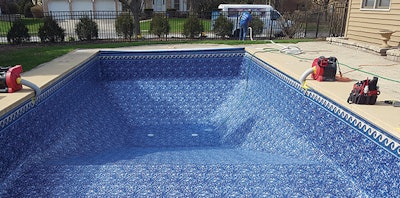
Given that we're in business to earn a profit, it only makes sense to identify which of our activities and products generate the greatest margins. We look at costs versus revenue in all areas of our business, and from that analysis we figure out where to focus our resources and efforts. We take it from all angles — from a client/account perspective, for example, determining which specific accounts and types of accounts contribute the most to the bottom line. We also look at it in terms of specific product types, the labor required by each and why customers make those purchasing decisions. We look at where we're generating referrals and the types of marketing that yield the most responses.
When you do perform vigorous and regular analysis, it can be amazing what you discover. And it's the only way to effectively strategize ways to improve your business and position in your market. In a well-run business, clear analysis is the bedrock for progress and success.
In our case, we have three divisions — construction, service and retail — and we work across gunite, vinyl liner and fiberglass. Our construction crew does just about everything, including excavation, gunite, fiberglass installation, package pool installation, decks — basically anything you can name in the backyard, we can do it.
From a business perspective, we're always looking for ways to capitalize on that diversity. But first, you have to collect and analyze the numbers.
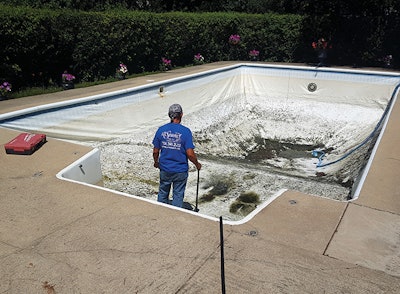
LINER LEDGER
One of the activities we look at very closely is liner replacement. About four years ago, we were doing about 50 liner replacements each year. That's a solid revenue stream. When we looked at it more closely, we realized replacing liners not only was our most profitable source of revenue, but it also opened the door to other sources of income.
We found we weren't just selling liners to our existing clients, but also to non-customers shopping for a new liner. (After all, not everyone goes with their existing pool company to buy a new liner.) Because we're priced competitively and have a good reputation, we wind up replacing liners for homeowners that are new to us. As a result, we found that if you do it well and do it right, you have an opportunity to gain new clients and ultimately provide them with everything they need. No other part of the business exposes us to that type of potential growth, at least not to the extent we see with liners.
RELATED: Tips for Vinyl-Liner Replacement
We also found that our liner crews are the most highly praised aspects of our business. Those crews receive a lot of recommendations through social media, for example. When we get that type of acceptance as a result of liner replacement, it's common that those people will then want us to close their pool for winter and then open the following spring. We're able to turn them into regular service customers.
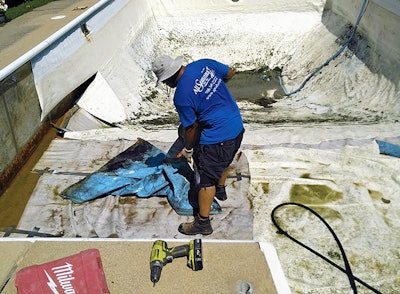
That's the goal with everything we do. From the moment we walk onto any property, we want to have those homeowners become All Seasons customers. Liners do that more effectively than anything else.
It's really interesting to consider why that's true. Pump or filter replacements, for example, happen because something has gone wrong. They are typically unplanned purchases, which make for stressed, unhappy customers.
But with liners, most customers already know they're going to need to replace it, so there's not much of a surprise or anxiety of an unexpected expense. And when you do install a new one, you're usually replacing some old, worn-out and faded liner, which instantly transforms the pool's appearance. Naturally, that leaves an extremely positive impression.
During a liner replacement, in some cases — probably 35% to 40% of the time — we're also replacing and/or adding other items, like new underwater LED lights, which further transform the entire setting. Or maybe we install a new salt system or variable-speed pump, which saves customers money on operating costs. We've become very good at taking the opportunity to suggest upgrades that will improve the customer experience. It's amazing how you start off with a liner replacement and then all the blinders come off and the customer is open to other ideas.
MEASURING SUCCESS
The specific metrics, reports and analysis you use for this kind of business assessment is always going to derive from the type of business, your market and the annual ebb and flow. Everything we look at here in Chicagoland includes the seasonal aspect, for example. So it's difficult to make generalizations about how to do it beyond looking at where you make the most profit for every dollar of cost.
In our case, it hasn't always been a tremendously sophisticated process. It's funny to consider that there was a time when we didn't manage everything using computers. Back in the late '80s and early '90s I was examining costs and profits on legal notepads with a pen and a calculator.
Fast-forward to today and it's amazing how fast and easy it is to pull reports with modern accounting and bookkeeping software. We can analyze everything from all sorts of perspectives in a matter of seconds. We can track in real time the margins we're earning on everything we're selling and on the tasks our technicians are performing. For most basic data, you don't even have to run reports — just log in and it tells you automatically how you're doing that day.
Still, you can't let the computer do all the thinking. There are human elements to consider, and it's important to throw some touchy-feely into those reports, otherwise you'll miss different types of opportunities. For example, our liner crews typically consist of a senior technician and a much less experienced apprentice-level technician. The costs associated with those two individuals are different.
RELATED: 11 Tips for Improved Profitability
With liner replacements we're able to use less-experienced and less-expensive laborers for at least half the crew. It enables those newer employees to gain experience and still make a profit for the company. It's a win-win situation that we're afforded by liners. (And while we're there selling pumps, heaters and filters, it's a great opportunity for that junior employee to gain experience in those areas.)
Compare that to something like pump replacement. There, you have only a senior technician who's driving from place to place doing four or five installs each day. That's expensive and impacts the margin you're actually earning on the new pump. With a liner crew, it's two guys doing one install per day. It's more money at a great margin with far fewer ancillary phone calls, travel time and overall headache.
That's one example of why you can't just read and react to computer reports. You need to look at other aspects of what's really going on.
Not only has the analysis process led us to focus on and fine-tune our most profitable activities, it has also informed how we compensate our employees. We have a fairly elaborate compensation structure for our employees based on their experience and how they're performing in terms of generating profits. It's basically a graduated profit-sharing program.
So there are numerous ways liner replacement measures up as our most profitable and beneficial source of revenue. Knowing and acting on that information benefits the company, our customers and our employees.
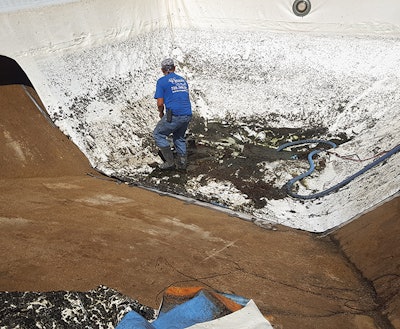
SHAKING LOOSE YOUR MONEYMAKER
With all of those upsides in mind, it only made sense to do what we could to boost our liner replacement business. We first made that decision four years ago, when, as I mentioned above, we were replacing about 50 liners annually.
The first thing we did was reach out to our liner suppliers and asked for any lists they kept of people who purchased liners in our area. Our thinking was we could take that consumer information and use it to target potential buyers in our area.
Without pointing any fingers, I do have to report that on the liner end of the market, manufacturers generally do not do a great job of keeping that kind of customer data. Consumers do see marketing messages and information about pumps, control systems and lighting, but much less so for liners.
We did receive some data, which was helpful, but fortunately we have maintained a customer list for every liner we've installed, dating back to 1991. For years, we would send out one postcard mailing every spring, but when we decided to make this big replacement liner push, we started doing different promotions every month.
Every month we offer a different incentive, and our early incentives have the greatest value. In February we might have a free opening with a liner purchase or some other discount of significant value. Those incentives decrease in value as the season approaches simply because the demand increases. Then, in summer when everyone's pool is up and running, we ramp back up the incentives in anticipation of the fall closing season.
RELATED: Giving Thanks Year-Round Can Help Business
In all, we maintain a list of 3,000 to 4,000 names, where we send printed postcard mailings to physical addresses. Even if customers don't buy a liner that year, they're reminded that it is something they will need to consider at some point. Or the mailing might prompt them to take a look at their old liner and realize that it's in need of an upgrade. In most cases, customers who decide to buy have been dealing with leaks and other significant issues and have waited until they have little choice. Either way, the promotion reminds the homeowner and offers them some kind of discount.
In addition to that, we have a vast email list we use to send out digital promotions. We put all the potential liner customers in a bucket and send email blasts that replicate the postcard promotions. We also post those promotions on Facebook, Twitter and throughout social media.
On top of those normal channels, we also have referral programs. There are a number of things we offer existing customers who refer someone to us. Maybe they get a free closing if they refer us to someone that purchases something of a certain value, or maybe an in-store credit, or $50 off their next service call. Again, because liners have a high value in terms of customer satisfaction, liner customers are very apt to refer someone to us.
All of this is reflected in the numbers. Here are some stats on our marketing efforts so far this year: 33% from current year postcards, 17% from prior-year postcards (they've been seeing it for a while and planned it for this year), 13% from online marketing directing potential clients to our website, 13% identified by our service department techs in the field (often when opening pools, our techs find the old liner has failed), 12% from referrals and 9% from email marketing.
The rest is from unidentified sources.
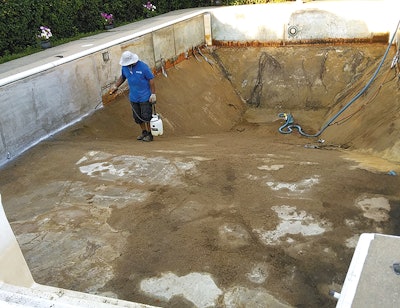
IT WORKED
Overall, this entire program has worked like a charm. We immediately doubled our liner replacement business, which has continued to increase each year. It's now roughly $500k a year, plus all the added sales that occur (pumps, filters, heaters, lighting, floor repairs, VGB compliance updates, etc.), and accounts for another roughly $160k in sales on those jobs. So annually this is about $660k of our direct business, plus downstream revenue from new customers gained for openings, closings, etc.
What's surprising is that it's the old school methods, the postcards in particular, that work the best. New and old postcards account for 50% of our responses.
We print oversized postcards so when they are pulled out of the mailbox, the customer is likely to notice them.
With referrals, we leave smaller business-sized cards behind with a reference number so they can give them to friends or neighbors and we can track where the referral came from. There is always some kind of thank you for the referring customer.
RELATED: What Customers Look for Before Hiring Pool Companies
These are also the most expensive types of marketing. Every time we do a run of postcards it costs about $2,500 dollars. But they are without question the most effective marketing tool we have, as they generate the vast majority of leads.
We carefully track how each promotion performs. If we see a July promotion that doesn't generate much business, or sometimes none at all, we rethink that promotion for next July and try something different.
Going forward, we're going to continue with the same type of analysis and marketing strategy in hopes of further increasing liner replacements and other profitable facets of our business. We've been in business long enough to know that if you look closely, there are always ways to do what you're doing a little bit better.











































